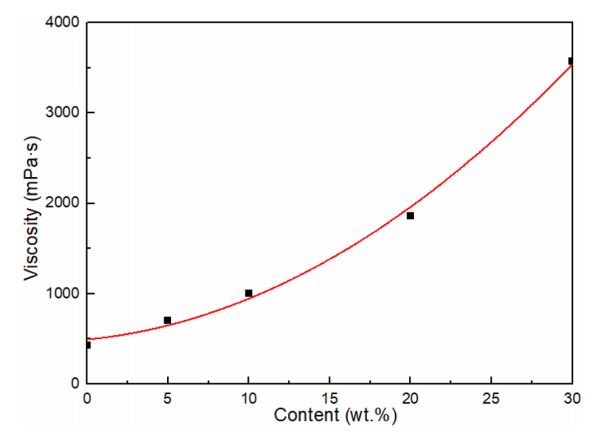Many of us have heard of using vegetable oil for alternative sources of energy like diesel gasoline, but you may be surprised to learn that it can play a role in 3D printing, too. Previous research has been performed in using vegetable oils with UV curing resins in SLA and DLP 3D printing; however, success has been limited. Authors Yanyan Cui, Junlai Yang, Dehua Lei, and Jiahui Su delve further into the study of alternative materials for 3D printing in the recently published “3D Printing of a Dual-Curing Resin with Cationic Curable Vegetable Oil.”
Dual-curing systems have been known to offer a high curing rate—along with better performance, such as improved mechanical properties and toughness. And, while many photopolymer 3D prints may be the result of dual-curing systems, in this study the researchers focus on the use of bio-based resins for stereolithography (SLA). They combine urethane-modified soybean oil with an epoxy group (urethane epoxidized soybean oil; SBOURE) to strengthen impact resistance of cycloaliphatic diepoxide, a binary monomer additive.
The advantages of using these materials and processes are:
- Simultaneous polymerization under exposure
- Fast curing rate
- Printed objects that are strong enough for creating interpenetrating network (IPN) structures, that is polymer connections that are interlaced but not covalently bonded.
Although cationic parts offer a low curing rate, the authors were able to overcome this with additional post-curing. With the inclusion of photoinitiated cationic SBO-URE, objects possessed the desired and sufficient strength—without decreasing elongation.
Initially, only mono-layer thickness spaces are present as the platform lowers to the bottom of the tank in this process, where the UV laser light is emitted for the curing of a thin layer on the platform. Afterward, the working platform rises and begins depositing layers. Ultimately, two IPNs were created, along with the IPN thermoset via SLA 3D printing.
Both hardness and gel content in the cured samples were “quite high,” connected with elevated cross-linking. Huge volume shrinkage was responsible for substantial stress internally, resulting in deformation; however, upon adding epoxidized vegetable oil, shrinkage was under control. A fullerene ball and a square pattern were 3D printed, both featuring ‘complex shape and fine structures.’ No cracks or delamination were present.

Effect of thermal postcuring on the properties of the 3D printed IPN10 thermoset: (a) the change of FT-IR spectra; (b) DMA curves; (c) tensile strength and elongation at break; (d) flexural strength and flexural modulus.

Effect of the SBO-URE content on the (a) tensile properties and (b) flexural properties of 3D printed IPN thermosets
“Based on the above analysis, the addition of SBO-URE into the epoxy acrylate endowed the printed parts with excellent mechanical properties and high resolution, and this combination can potentially be used for renewable 3D printing materials,” concluded the researchers.
A variety of composite resins have been the focus of research studies in the past, to include the addition of graphene oxide elastomers, long carbon fibers, and thermoset composites for use in aerospace. What do you think of this news? Let us know your thoughts! Join the discussion of this and other 3D printing topics at 3DPrintBoard.com.

(a, b) Photographs of 3D printed objects captured during
the printing process; (c) photograph of the printed models of column
and cuboid arrays with different dimensions from 0.5−2 mm; (d, e)
optical microscopy images of the printed samples with effective
diameters; (f, g) the printed objects of different architectures; the
inset pictures show the macroscopic size; (h) SEM and (i) LSCM
images of the surface finish of the printed object.
Subscribe to Our Email Newsletter
Stay up-to-date on all the latest news from the 3D printing industry and receive information and offers from third party vendors.
You May Also Like
3D Printing Unpeeled: Biofuel Waste to Filament & Sustainable Photopolymers
I can’t ever remember a day with so many potentially high impact news stories have come out. In one story, we all know that there are problems with the safety...
Finnair Hires AM Craft to 3D Print Plastic Parts for Aircraft Interiors
Riga-based AM Craft, a supplier specialized in 3D printing aviation components and certified under EASA Part 21G, announced a significant achievement today. The company will assist in upgrading Finnair’s A320...
3DPOD Episode 198: High Speed Sintering with Neil Hopkinson, VP of AM at Stratasys
Neil Hopkinson, a pioneering 3D printing researcher, played a pivotal role in developing a body of research that is widely utilized today. He also invented High Speed Sintering (HSS), also...
3D Printing Webinar and Event Roundup: May 12, 2024
Webinars and events are picking up in the AM industry this week! ASTM International continues its Professional Certificate Course and Stratasys continues its advanced in-person trainings, while 3D Systems is...




































